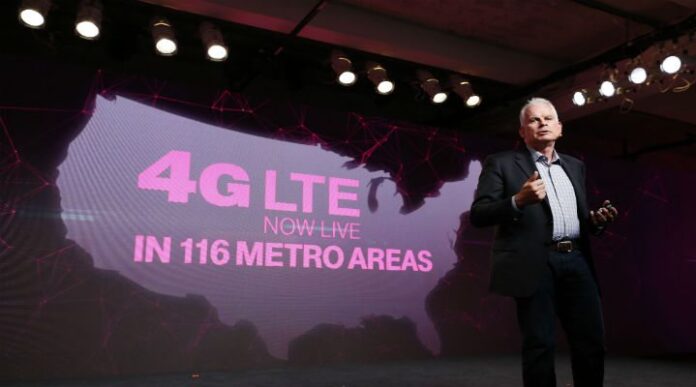Claims 50% increase in network speeds
T-Mobile US continued its push to increase network performance, announcing the expansion of its “wideband” LTE service into the Boston area. The carrier said the upgrade provides a 50% increase in network speeds, with claims that some subscribers witnessed download speeds as high as 94 megabits per second.
T-Mobile US’ “wideband” LTE claim is based on it adding more spectrum to support LTE services, which had initially run across 20 megahertz of spectrum in the 1.7/2.1 GHz band. The carrier is now offering a total of 30 megahertz of spectrum in the 1.7/2.1 GHz band to support LTE services in Boston. Following its acquisition of MetroPCS last year, T-Mobile US has aggressively re-farmed that carrier’s 1.7/2.1 GHz spectrum to support LTE services, which in some markets has allowed T-Mobile US to throw up to 40 megahertz of spectrum behind its LTE service.
In the most recent RootMetrics network report, T-Mobile US’ LTE network in the Boston area was ranked No. 3 in overall performance behind larger rivals Verizon Wireless and AT&T Mobility. However, RootMetrics reported that T-Mobile US’ network provided the area’s highest overall network speed, with median downloads clocked at 17.7 Mbps, which was an improvement over the 15.5 Mbps speeds provided earlier this year.
T-Mobile US noted that all LTE-equipped devices will see a speed increase, with those supporting category four LTE technology able to tap into the full amount of spectrum and thus the greatest benefit.
Verizon Wireless also provides up to 40 megahertz of spectrum support in the Boston area through its 700 MHz and 1.1/2.1 GHz spectrum holdings, though it also likely supports a much larger customer base in the area as its total customer base is more than twice the size of T-Mobile US. RootMetrics noted that while Verizon Wireless tied with AT&T Mobility in providing the best overall performance in the Boston area, its network speed ranking was third behind T-Mobile US and AT&T Mobility. The Verizon Wireless network also does not allow for a contiguous 40 megahertz channel, with customers only having access to either the 20 megahertz in the 700 MHz or the 1.7/2.1 GHz bands at one time. Mobile operators are working to deploy carrier aggregation technology that will allow them to combine disparate spectrum bands to support wider LTE channels.
T-Mobile US had previously expanded spectrum support in a number of markets, including Atlanta, San Francisco and Los Angeles, with plans to cover 26 markets by the end of the year. The carrier’s current LTE network provides coverage to more than 250 million potential customers across the country, with plans to cover 280 million pops by mid-2015, and 300 million pops by the end of next year. That expanded coverage will come from the use of 700 MHz spectrum assets T-Mobile US has recently begun to aggregate as well as continued re-farming of its 1.9 GHz spectrum that is currently used to support legacy 2G and 3G services for its LTE network.
T-Mobile US also is participating in the current Auction 97 proceeding, which has in less than one week generated more than $24 billion in total potential winning bids. The auction includes 50 megahertz of paired spectrum in the 1.7/2.1 GHz band, though winning bidders will not be released until the auction concludes.
Bored? Why not follow me on Twitter

